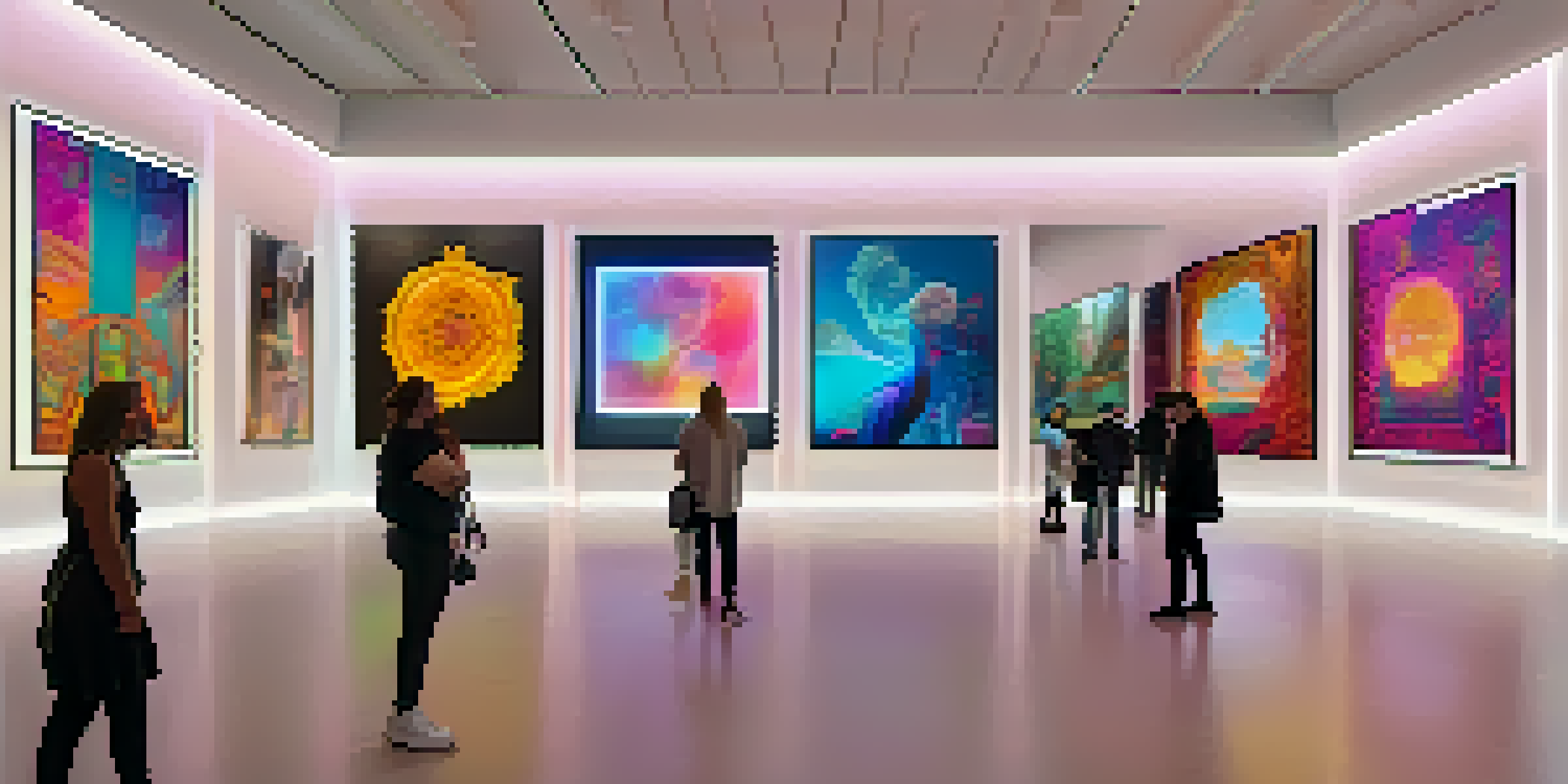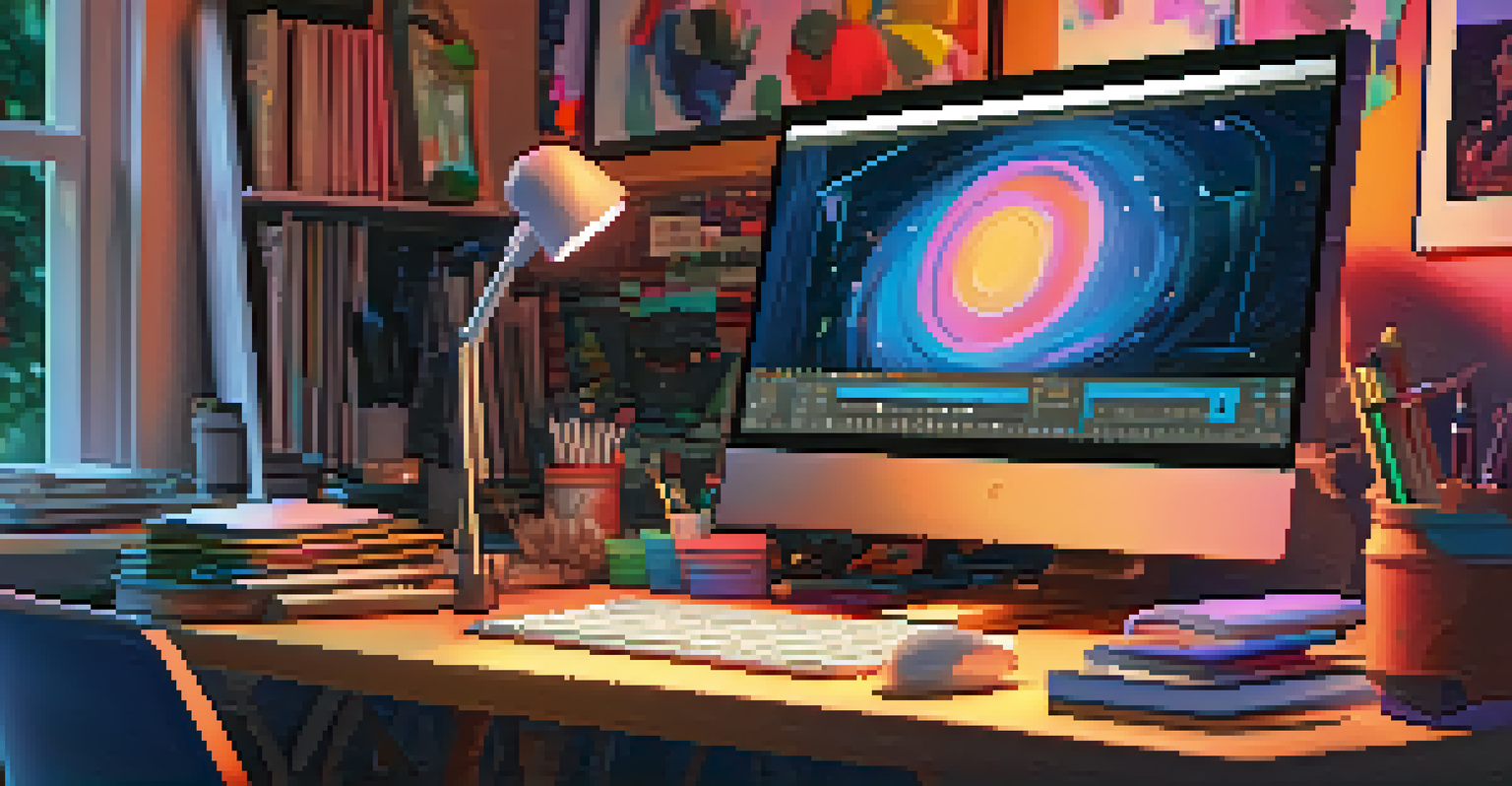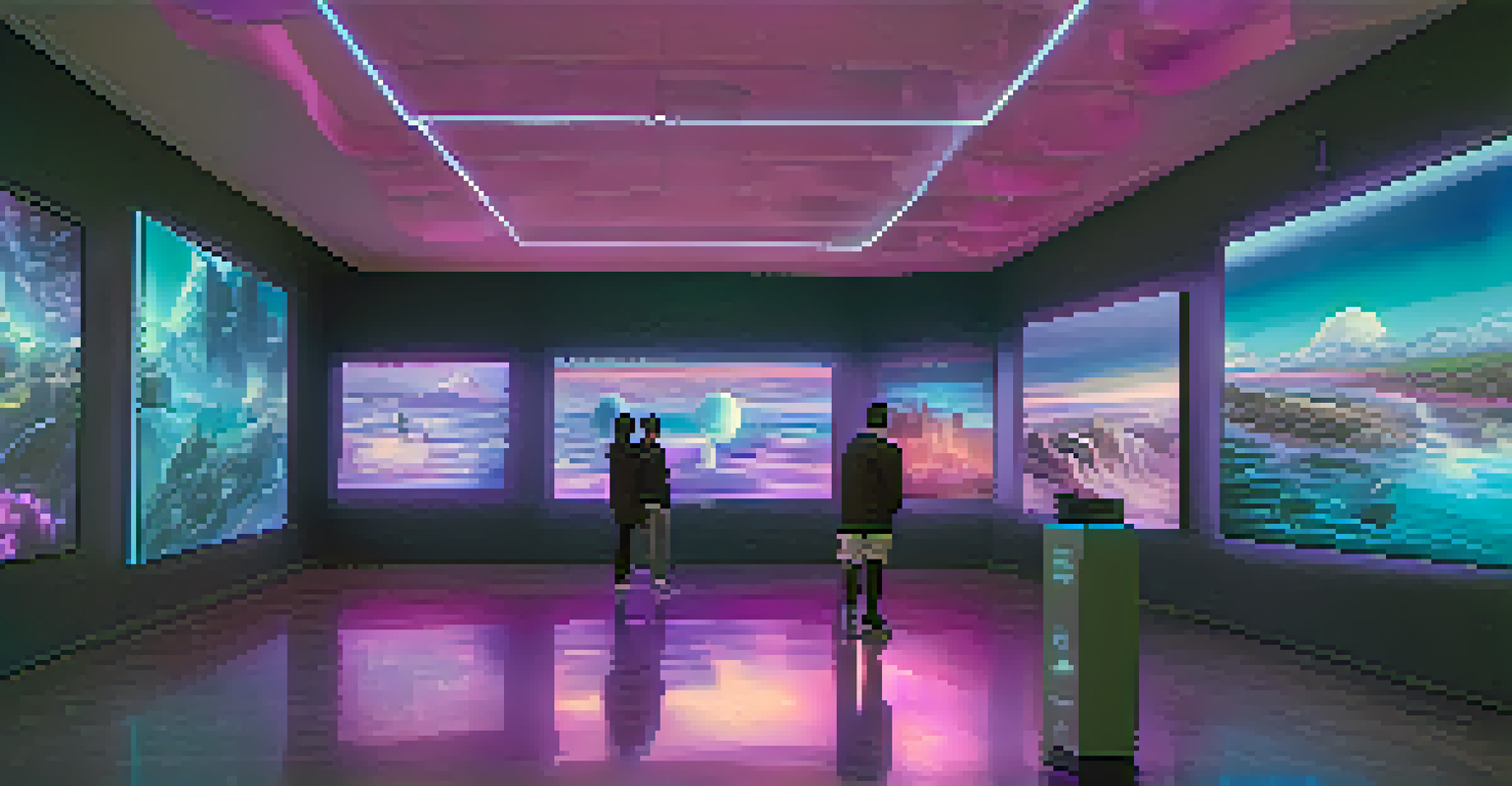How NFTs Transform Ownership in Digital Art and Collectibles

Understanding NFTs: The Basics of Non-Fungible Tokens
NFTs, or Non-Fungible Tokens, are unique digital assets that represent ownership of a specific item, often in the realm of art and collectibles. Unlike cryptocurrencies like Bitcoin, which are interchangeable, each NFT has distinct qualities that set it apart. Think of an NFT like a one-of-a-kind trading card; no two are the same, and that uniqueness is what gives it value.
NFTs have the potential to democratize art, giving artists and collectors more control over their work and investments.
The emergence of blockchain technology underpins NFTs, ensuring that each token is securely verified and cannot be duplicated. This transparency is crucial, as it allows buyers to trust that they are purchasing an original piece of art. For artists, this means they can sell their work directly to collectors without the need for intermediaries, reshaping traditional art markets.
As more artists and collectors embrace NFTs, the digital art landscape is evolving rapidly. This shift not only democratizes access to art but also introduces new revenue streams for creators. By understanding NFTs, we can appreciate how they are transforming ownership in the digital realm.
The Shift from Physical to Digital Ownership
Historically, owning art meant having a physical piece to display in your home. With the rise of digital art, that notion has shifted dramatically. Now, collectors can own, showcase, and trade digital artworks just as they would physical pieces, but with the added benefits of accessibility and convenience.

Imagine a virtual gallery where you can display your digital art collection for friends and visitors from anywhere in the world. This is made possible through NFTs, which allow ownership to be easily transferred and displayed in various digital environments. The art isn’t confined to physical walls; it can be enjoyed in virtual spaces, making it more accessible than ever.
NFTs Transform Digital Ownership
NFTs enable collectors to own, showcase, and trade digital art just like physical pieces, expanding accessibility and convenience.
Moreover, this shift enhances the potential for artists to reach a global audience. No longer limited by geographical boundaries, digital artists can showcase their works online, increasing their chances of being discovered and purchased. This evolution signifies a broader cultural acceptance of digital ownership.
Empowering Artists Through Direct Sales
One of the most significant advantages of NFTs is the ability for artists to sell directly to collectors, bypassing traditional galleries and auction houses. This not only increases their profit margins but also allows them to maintain control over their work. Artists can set their prices and terms, creating a more equitable marketplace.
The future of art is digital, and NFTs are the gateway to owning pieces of this new world.
Additionally, many NFT platforms provide artists with the option to earn royalties on secondary sales. This means that every time their work is resold, they receive a percentage of the sale price. This model contrasts sharply with traditional art sales, where artists often see little benefit from the resale of their work.
By embracing NFTs, artists can cultivate a loyal fanbase while establishing sustainable revenue streams. The empowerment of artists in the digital realm is a game-changer, allowing them to thrive in an industry that has historically been dominated by gatekeepers.
Building Community and Fostering Engagement
NFTs are not just about ownership; they also foster community and engagement among collectors and creators. Many NFT projects prioritize building vibrant communities where members can interact, share ideas, and collaborate on new works. This sense of belonging can enhance the value of the art itself.
For instance, some NFT artists host virtual events or discussions, allowing collectors to connect with them and each other. These interactions can create a deeper appreciation for the art, as collectors gain insights into the artist's process and inspiration. Such community-driven approaches elevate the experience beyond mere transactions.
Artists Gain Control with NFTs
By selling directly to collectors through NFTs, artists can increase profits and retain control over their work while earning royalties on resales.
In this way, NFTs have the potential to unite people around shared interests, creating networks of support and collaboration. As art becomes more communal, the lines between creator and collector blur, leading to a richer, more interactive art ecosystem.
The Environmental Impact of NFTs
While NFTs offer exciting possibilities, they also raise questions about their environmental impact. Many NFTs are minted on energy-intensive blockchain networks, which has led to concerns about their carbon footprint. As awareness of climate change grows, it's essential to consider how digital innovations can align with sustainability.
Fortunately, the industry is evolving, with several platforms exploring eco-friendly alternatives. For example, some blockchains use proof-of-stake mechanisms, which require significantly less energy compared to traditional proof-of-work systems. Artists and collectors alike are becoming more conscious of their choices, seeking out sustainable NFT options.
By prioritizing environmental responsibility, the digital art community can continue to thrive without compromising the health of our planet. This shift towards sustainability not only preserves the integrity of the art but also illustrates the potential for innovation in addressing global challenges.
Legal Considerations in NFT Ownership
As with any burgeoning industry, the rise of NFTs brings forth legal considerations that both artists and collectors should be aware of. Issues such as copyright, intellectual property rights, and the authenticity of digital assets can be complex in the NFT space. Understanding these legal frameworks is vital for navigating the market safely.
For instance, purchasing an NFT does not automatically grant the buyer copyright to the underlying work. Artists can retain their rights while still selling the NFT, which means collectors should be clear on what ownership entails. This distinction is crucial to avoid misunderstandings down the line.
Community Engagement in NFTs
NFTs foster vibrant communities where creators and collectors can interact, enhancing appreciation for art and blurring the lines between both roles.
As the NFT landscape matures, legal frameworks will likely evolve to address these challenges. Staying informed about rights and responsibilities can help both artists and collectors make educated decisions, ensuring a fair and transparent marketplace.
The Future of NFTs in Digital Art and Collectibles
Looking ahead, the future of NFTs in digital art and collectibles appears promising but also unpredictable. As technology continues to evolve, we can expect new platforms, tools, and applications to emerge, shaping how we create, buy, and sell art. This ongoing innovation will likely enhance the user experience and democratize access even further.
Furthermore, the integration of augmented reality (AR) and virtual reality (VR) with NFTs could revolutionize how collectors experience art. Imagine walking through a virtual museum where you can interact with digital pieces in real time. This immersive experience could redefine the relationship between art and its audience.

Ultimately, the potential for NFTs to transform the art world is immense. By continuing to explore and adapt to new technologies, artists and collectors can forge a path towards a more inclusive and dynamic future in digital art.